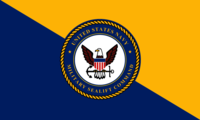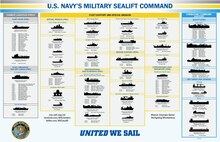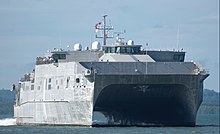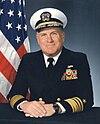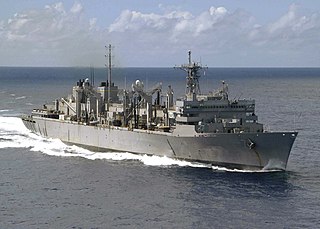
The fast combat support ship is a type of replenishment auxiliary ship. Different from traditional logistic ships, the fast combat support ship is designed with high speed to keep up with the carrier battle group/carrier strike group, while the multi-product station is capable of supplying all types of necessities for the fleet.

The United States Merchant Marine is an organization composed of United States civilian mariners and U.S. civilian and federally owned merchant vessels. Both the civilian mariners and the merchant vessels are managed by a combination of the government and private sectors, and engage in commerce or transportation of goods and services in and out of the navigable waters of the United States. The Merchant Marine primarily transports domestic and international cargo and passengers during peacetime, and operate and maintain deep-sea merchant ships, tugboats, towboats, ferries, dredges, excursion vessels, charter boats and other waterborne craft on the oceans, the Great Lakes, rivers, canals, harbors, and other waterways. In times of war, the Merchant Marine can be an auxiliary to the United States Navy, and can be called upon to deliver military personnel and materiel for the military.

The Lewis and Clark class of dry cargo ship is a class of 14 underway replenishment vessels operated by the United States Navy's Military Sealift Command. The ships in the class are named after famous American explorers and pioneers.

USNS Rappahannock is a Henry J. Kaiser-class underway replenishment oiler operated by the Military Sealift Command to support ships of the United States Navy.

USNS Observation Island (T-AGM-23) was built as the Mariner-class merchant ship Empire State Mariner for the United States Maritime Commission, launched 15 August 1953, and operated by United States Lines upon delivery on 24 February 1954, making voyages for the Military Sea Transportation Service (MSTS) until going into reserve at Mobile, Alabama on 9 November 1954.

MV Capt. Steven L. Bennett (T-AK-4296) was a container ship and lead ship of her class. Originally named TNT Express, she was built by Samsung Heavy Industries in Koje, South Korea in 1984. She was named after United States Air Force Medal of Honor recipient Captain Steven L. Bennett. The ship was a Logistics Prepositioning Ship sponsored by the U.S. Air Force. The ship returned to commercial service after the MSC contract ended in October 2012.

USNS Sea Lift (T-LSV-9) was a roll on/roll off (Ro/Ro) cargo ship built for the United States Navy's Military Sea Transportation Service (MSTS), currently the Military Sealift Command (MSC). She became the first ship of Ro/Ro-type to deliver cargo to Vietnam during the war in Indochina.

As the hub of the Marine Corps' prepositioning programs, Marine Corps Support Facility Blount Island(MCSF-BI), located in Jacksonville, Florida, serves as the home of Blount Island Command(BICmd) and its worldwide mission of supporting the Fleet Marine Forces (FMF) who are Forward deployed and forward engaged.

USNS Red Cloud is one of Military Sealift Command's nineteen Large, Medium-Speed Roll-on/Roll-off (LMSR) Ships and is one of the 49 ships in the prepositioning program. She is a Watson-class vehicle cargo ship named for Corporal Mitchell Red Cloud, Jr., a Medal of Honor recipient, after whom Camp Red Cloud in Korea is also named.

USNS Sgt. Andrew Miller (T-AK-242) was built as Victory ship SS Radcliffe Victory, a Boulder Victory-class cargo ship, built at the end of World War II. She served during the war and its demilitarization as a commercial cargo vessel operated by American West African Lines under charter with the Maritime Commission and War Shipping Administration. From 1946 to 1950, she served the US Army as a transport named USAT Sgt. Andrew Miller. In 1950, she was acquired by the US Navy and assigned to the Military Sea Transportation Service (MSTS). In 1981 she ended her career and was placed into reserve.

USNS Sgt. Truman Kimbro (T-AK-254) was a Boulder Victory-class cargo ship built for the U.S. Maritime Commission during the final months of World War II as the SS Hastings Victory.
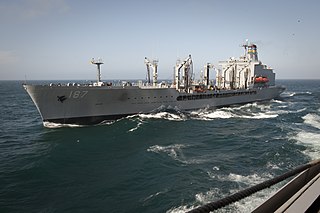
USNS Henry J. Kaiser (T-AO-187) is a United States Navy fleet replenishment oiler and the lead ship of her class. Her mission is to resupply U.S. Navy and allied ships at sea with fuel oil, jet fuel, lubricating oil, potable water, and dry and refrigerated goods, including food and mail.

USNS Maumee (T-AO-149), later T-AOT-149, was a United States Navy Maumee-class oiler, later transport oiler, in non-commissioned service with the Military Sea Transportation Service (MSTS), later Military Sealift Command, from 1956 until probably the mid-1980s.

The fifth USNS Potomac (T-AO-181) was a United States Navy oiler in non-commissioned service with the Military Sea Transportation Service, later Military Sealift Command, from 1976 to 1983.
The Naval Fleet Auxiliary Force is a division of the US Navy. The 42 ships of the Military Sealift Command's Naval Fleet Auxiliary Force are the supply lines to U.S. Navy ships at sea. These ships provide virtually everything that Navy ships need, including fuel, food, ordnance, spare parts, mail and other supplies. NFAF ships enable the Navy fleet to remain at sea, on station and combat ready for extended periods of time. NFAF ships also conduct towing, rescue and salvage operations or serve as floating medical facilities. All NFAF ships are government owned and crewed by civil service mariners. Some of the ships also have a small contingent of Navy personnel aboard for operations support, supply coordination and helicopter operations.

USNS VADM K. R. Wheeler (T-AG-5001),, is an Offshore Petroleum Distribution System (OPDS) ship built in 2007. The ship is named after Vice Admiral Kenneth Ray Wheeler, an American sailor who was a Legion of Merit recipient and Prisoner of War during World War II.

USNS 1st Lt. Jack Lummus (T-AK-3011),, is the fourth ship of the 2nd Lt. John P. Bobo-class cargo ship built in 1986. The ship is named after First Lieutenant Jack Lummus, an American Marine who was awarded the Medal of Honor during World War II.
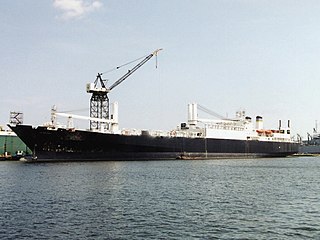
USNS LCPL Roy M. Wheat (T-AK-3016), the only ship of its class, is a cargo ship built in 1987. She became one of the only Soviet ships to enter United States service. The ship is named after Lance Corporal Roy M. Wheat, an American Marine who was awarded the Medal of Honor during Vietnam War.
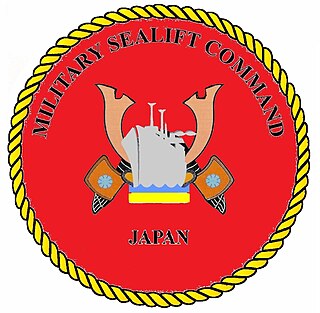
Military Sealift Command Japan (MSC Japan) (軍事海上輸送司令部 (MSC) 日本) is an Echelon IV Command of the United States Navy responsible for training, equipping and maintaining Military Sealift Command's government-owned, government-operated sealift ships throughout the country of Japan. Headquartered in Yokohama at Yokohama North Dock and co-located with the US Army 836th Transportation Battalion, MSC Japan is Commanded by an Active Duty Naval Officer and staffed with the following organizational Departments: N1 (Administration), N3 (Operations/Port Operations), N4 (Logistics), N6 (Information & Technology Support), N7 (Port Engineer), N8 (Accounting), and N10 (Contract Support). MSC Japan operates two warehouses, one at North Dock (MSC's largest overseas warehouse) and one in Sasebo, Japan. These facilities provide logistics support for all MSC units operating within the Pacific theater.

